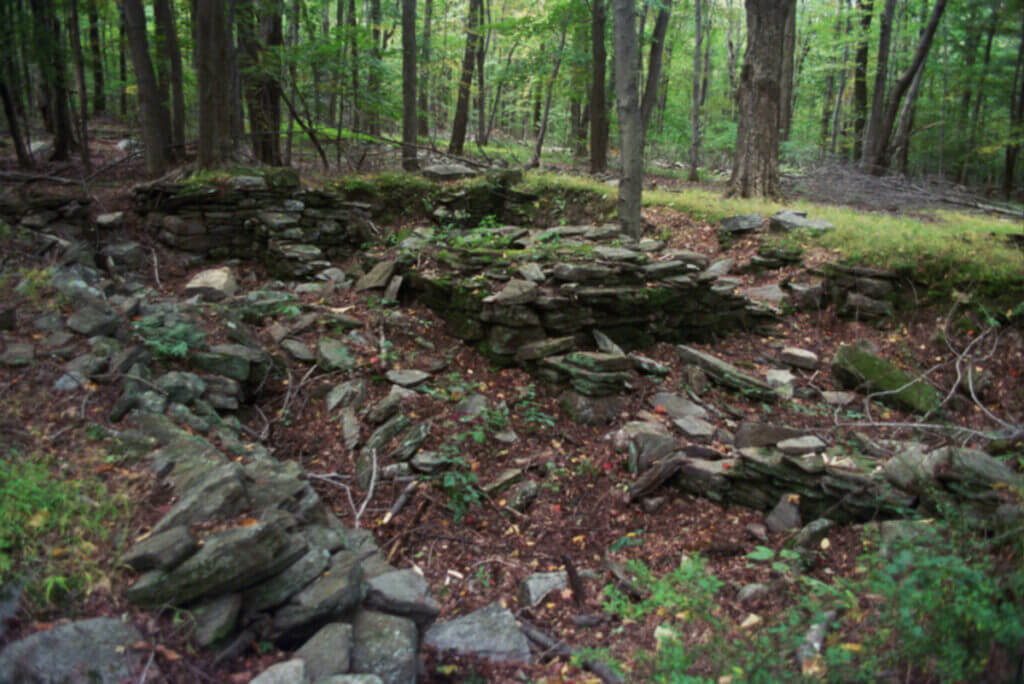
For many early colonial settlers, abandoned artifacts are all that remains of their lives and lifestyle. With pastures now largely reclaimed by the forest, their cellar holes stand as a reminder of the families who worked, farmed, thrived, and struggled here.*
“To him who has searched for forgotten cellar holes and found therein hidden charms. Sweet stories are woven in their silence. Once a home! Generations have gone past over the highways; … and he has found that the spirit which loved these surroundings has been awakened again in his soul and to him his treasured cellar holes are sacred ground.” – Lena Latimer Osmun**
“Two centuries and more have passed since our pioneer forefathers came to these valleys and upland ridges to build their homes, plant their crops and raise their families. These early ancestors were hardy folk. Thrift, hard work and the will to survive were their chief assets. They built strong characters, strong bodies and strong houses. Families thrived and soon a flourishing town with pleasant farms, small mills and friendly homes grew up along the river. An honest day’s pay for an honest day’s work was the yardstick of endeavor, and a solid set of values became the law of the land.
Old fashioned virtues of sincerity, industry and integrity have a simple beauty that no words can portray; however invention and progress were not to be denied.
One by one the old farms and mills were abandoned. Sturdy houses that had weathered the elements for two hundred years have begun to crumble. Spring freshets have breached the mill dams and the ponds have shrunk to weed-choked swamps. The mills have tumbled down and in many places only a sluice-way remains; a mute reminder of early pioneering industry.
Now the old cellar holes drowse and dream through the long summer days. Fireweed, sumac and blackberry cover the cellar floor where once were stored piles of potatoes, cabbage, onions and beans. One was also sure to find a barrel of salt pork and perhaps a barrel of cider against the north wall… A large square chimney base stands mutely in the center with, perhaps, the last vestiges of a fireplace now looking blankly and unseeing into the past.
Time was when sounds of family life floated through the rooms around this fireplace; sounds of laughing children, sounds of joyful weddings and the silent sound of death. Now all is gone. The good people who labored so long to make a home for their children now sleep in the village churchyard; the only reminder to posterity, a white headstone which even now is crumbling to dust.”**
The stone cellars of Pilfershire have a story to tell.
* NH Division of Historical Resources, “Cellar Hole Forum Press Release, 10/02/08”, www.nh.gov/nhdhr/news/cellarholeforum.htm. Accessed 29 Oct. 2023.
** Osmun, Kenneth Latimer. “Cellar Holes.” The Lure of the Litchfield Hills, Vol.XXVI, No.11, Summer 1966, pp.

